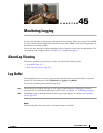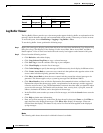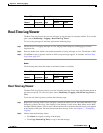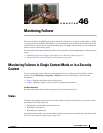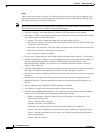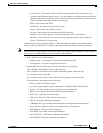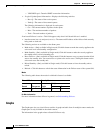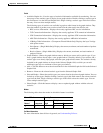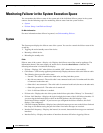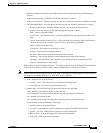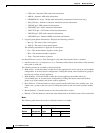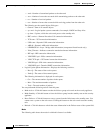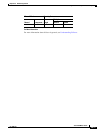
46-4
Cisco ASDM User Guide
OL-16647-01
Chapter 46 Monitoring Failover
Monitoring Failover in Single Context Mode or in a Security Context
–
VPN DHCP upd—Tunneled DHCP connection information.
• *Logical Update Queue Information—Displays the following statistics:
–
Recv Q—The status of the receive queue.
–
Xmit Q—The status of the transmit queue.
The following information is displayed for each queue:
–
Cur—The current number of packets in the queue.
–
Max—The maximum number of packets.
–
Total—The total number of packets.
*Lan-based Failover is active—This field appears only when LAN-based failover is enabled.
• interface name (n.n.n.n) and peer (n.n.n.n)—The name and IP address of the failover link currently
being used on each unit.
The following actions are available on the Status pane:
• Make Active—(Only available in Single mode) Click this button to make the security appliance the
active unit in an active/standby configuration.
• Make Standby—(Only available in Single mode) Click this button to make the security appliance
the standby unit in an active/standby pair.
• Reset Failover—(Only available in Single mode) Click this button to reset a system from the failed
state to the standby state. You cannot reset a system to the active state. Clicking this button on the
active unit resets the standby unit.
• Reload Standby—(Only available in Single mode) Click this button to force the standby unit to
reload.
• Refresh—Click this button to refresh the status information in the Failover state of the system field.
Modes
The following table shows the modes in which this feature is available:
For More Information
For more information about failover in general, see Understanding Failover.
Graphs
The Graphs pane lets you view failover statistics in graph and table form. In multiple context mode, the
Graphs pane is only available in the admin context.
The information in the graphs relate to Stateful Failover only.
Firewall Mode Security Context
Routed Transparent Single
Multiple
Context System
• • • •—




